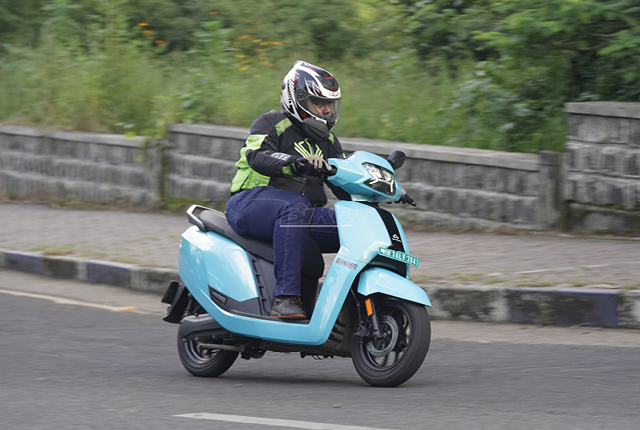
Ampere launched their first electric scooter, the Magnus, back in 2021, and since then have come out with a few other models. The Nexus is their most ambitious offering yet. Does it have what it takes to hang with the competition in the cutthroat Indian e-scooter market?
Story: Sayantan De
Photography: Sanjay Raikar
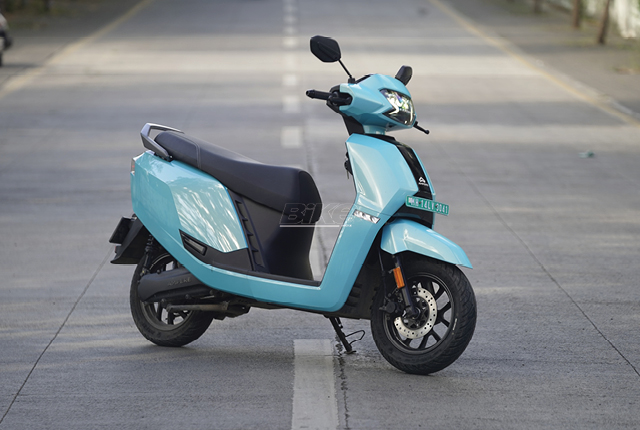
Ampere Electric, backed by Greaves Cotton, first came onto the Indian electric scooter scene in 2021. Since then, they have been steadily releasing new models, and the Ampere Nexus, their latest product, is their first premium offering. However, there are quite a few established players in that segment, so does the Ampere Nexus have what it takes to find its place? We spent almost a day with it, trying to answer this question.
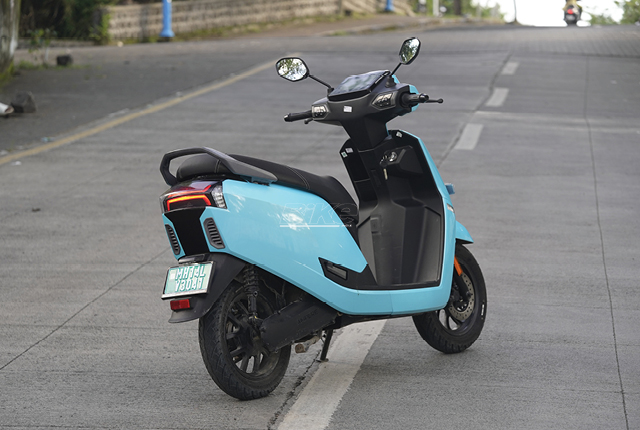
The Ampere Nexus have very simple and clean lines, which won’t win any beauty pageants, but also won’t let onlookers turn their heads away, and simple designs tend to work better for scooters in this segment as well. One of the design highlights is the tail light, which is encased in a transparent acrylic bubble, separating the lighting elements from the protective cover and giving the rear end a distinctive appearance. There are functional vents flanking the tail lamp, with their forward counterparts mounted on the plastic cover just ahead of the cowls. There are some issues with fit-and-finish, particularly the black plastic bits, which don’t look like they have any place on a Rs 1-lakh plus scooter. Issues like this are usually resolved on production models, so this is not yet a dealbreaker. Overall build quality feels quite solid.
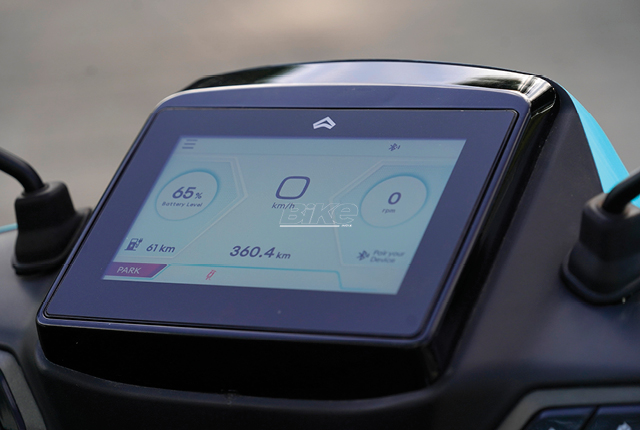
We got our hands on the Ampere Nexus ST model, which comes with a seven-inch TFT screen and is capable of syncing with smartphones via Ampere’s own app, thus enabling the usual list of features such as navigation, music control etc. The display also has automatic day-and-night mode switching based on the ambient lighting conditions, but there’s a noticeable delay in the switch, which I believe can be resolved with a software patch. Also, as the ambient light sensor is placed at the centre of the bottom bezel of the display, it is very easy to place your hand on it and change the mode without meaning to, which is a minor irritant. The Reverse mode requires a continuous press of the button, which is obviously done with safety in mind, but is actually a hindrance, as the buttons are placed quite far away from the grips, and require a pianist’s fingers and dexterity to operate. This in itself wouldn’t have been a huge issue, but the turn signal switches are placed on two sides of the handlebar, and to activate the right turn signal I needed to release my grip on the throttle. Overall, the switchgear is a bit of an ergonomic disaster.
The Ampere Nexus has a 4.0-kW mid-drive motor, and this placement does wonders for the handling—more on this later. The motor is powered by a 3.0-kWh LFP battery (Ampere claim they went with LFP battery chemistry instead of lithium-ion keeping in mind our extremely hot climate). The claimed range is 136 km on a full charge, though the real range, as indicated by the display in Eco mode is 105 km (85 km and 70 km on City and Power modes, respectively). During a 30-odd km run through city traffic, with a mix of Eco and City riding modes, the battery lost about 40 per cent charge with a remaining range of 56 km in Eco mode. I feel the rather high depletion of the charge is partly due to the lack of regen, which is non-existent. Ampere do not mention anything about the regen in their material, so it is unlikely to be a work in progress as well. A full charge takes three-and-a-half hours with the included 15A charger, with a 25A charger available as an option.
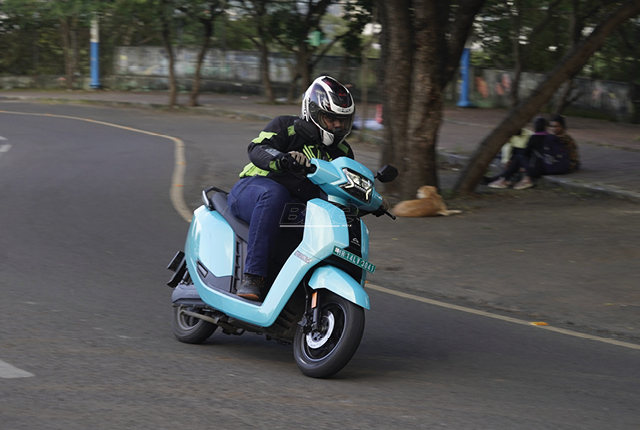
The Ampere Nexus rides on 12-inch wheels front and rear, wrapped in identical 90-section tyres. There’s a telescopic front fork and dual rear shock absorbers. Also, the wheelbase is 1,319 mm, which is one of the longer ones in the segment, as most other scooters in this category have a shorter wheelbase except the Ola S1 series. When all of these are combined with the aforementioned mid-mounted motor, the result is excellent handling prowess. The suspension is on the stiffer side, which aids the handling as well, and I was able to corner at decent lean angles, something I didn’t expect would come in the review before I rode the scooter. The trade-off is the judder from the front fork, which sometimes unsettles the Ampere Nexus on rouge patches of roads and aggressive rumble strips. A slightly softer spring rate and a little bit of damping adjustment should fix the issue.
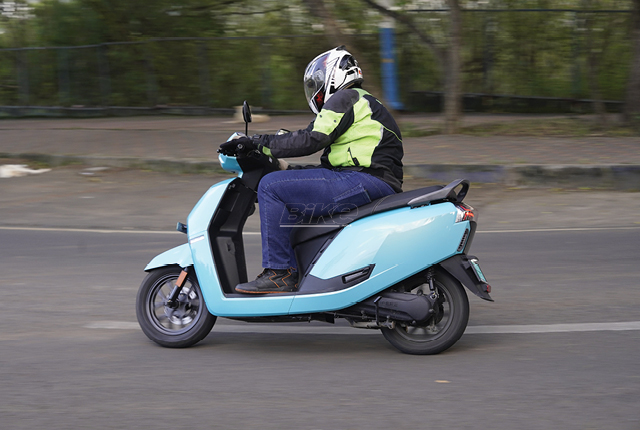
The price of the Ampere Nexus starts from Rs 1.10 lakh for the EX model, while the ST with its TFT screen and charging statistics will require an additional Rs 10,000. While the fundamentals of the scooter are solid, there are quite a few issues that need to be resolved before the scooter reaches the customers, though it is Ampere’s best effort yet, it is not quite there with the competition in terms of fit and finish, regen, and ergonomics. The scooter does have potential, but it will require a little bit of effort to make it into a worthy contender to the established ones, and I believe it has what it takes to become that, it’s just not quite there yet.

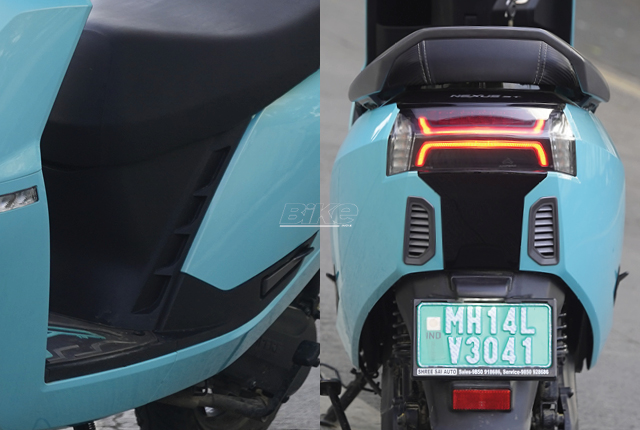
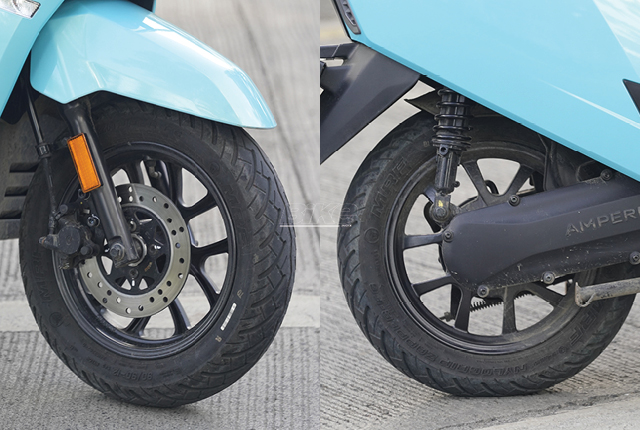

Leave a Reply